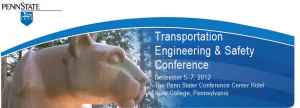On March 19. 2013 the American Society of Civil Engineers released the 2013 update to their National Infrastructure Report Card. The report card assesses the condition of America’s infrastructure in 16 categories. The overall grade was a D+ which is an improvement over the 2009 assessment which had an overall grade of D. The major areas of improvement were the rail system and the highway bridge system. The rail systems benefitted from significant private investment in the rail freight system and an improvement in the number of users of the passenger rail system. The highway bridge system improved slightly because of a general change in the State Department of Transportation’s programs to favor maintenance of existing facilities over expansion of the roadway system. The Bridges category received a C+ grade, In Pennsylvania, PennDOT has made a major effort to address structurally deficient bridges over the last five years. Unfortunately, because of the age of Pennsylvania’s bridges each year many additional bridges fall into the structurally deficient category. Currently 25% of Pennsylvania’s bridges are structurally deficient; that’s right, one in four bridges are structurally not able to carry their design load.
As part of the report card release, ASCE held their legislative Fly-in. Pete Terry was proud to be one of eight representatives from Pennsylvania who met with Representatives and Senators from across the State. The main focus of the visits was to share the updated Report Card findings, discuss the next Transportation Funding Bill (MAP 21, the current bill, will expire in September 2014) and to discuss the Water Resources Development Act which provides funding for dam safety, harbor improvements, and improvements to the system of inland waterways. In general, is seems that our federal legislators are beginning to understand the value of infrastructure to creating jobs, competitiveness, and our standard of living. The current fiscal constraints and a reluctance to increase user fees continues to hold back support for increased funding. ASCE indicated three key solutions to increasing our infrastructures grades; (1) Increase leadership on the state and federal levels in infrastructure renewal, (2) Promote sustainability and resilience in the design and maintenance of our infrastructure, and (3) Develop and fund plans to coordinate all transportation modes and their funding.
To see the 2009 Report Card please visit http://www.infrastructurereportcard.org/
